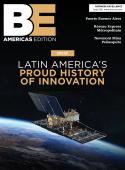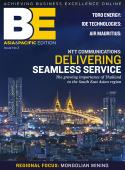The Florida Department of Transportation is getting a rare glimpse into the world of vertical construction, thanks to its lynchpin role in the Miami Intermodal Center. Keith Regan details the lessons learned and how theyÔÇÖll pay off down the road. By any measure, the Miami Intermodal Center (MIC) is an ambitious project. It has been in the planning stages in some form since the late 1980s, when county officials recognized that creating a smoother transition into and out of Miami International Airport could have enormous economic benefits. The $1.7 billion project seeks to tie together both heavy and light rail as well as public and private bus service and car rental services, increasing access to multiple modes of transportation in an area that has become the heart of the fast-growing Miami region. The Florida Department of Transportation (FDOT) became the lead agency on the project in the early 1990s. As Isa Nu├▒ez, construction program manager for the agencyÔÇÖs District 6 office notes, that means not only extensive coordination and partnership with the other parts of the projectÔÇöwhich all told involve scores of contracts and tens of millions of dollarsÔÇöbut also taking responsibility for a vertical construction project, something rare within the DOT. A $370 million project is the Rental Car Center (RCC) that lies on the east side of the MIC. Ground was broken in spring 2007, and construction is on track for completion early in 2010. The four-level, 6,500-car facility is the first major building of the intermodal center. Next up will be a $40 million fully enclosed and air-conditioned station for the MIA Mover, an elevated train that will shuttle as many as 3,000 people every hour from the airport terminals to the MIC.┬á After that work is done, attention will turn to building a Miami Central Station that will house light and heavy rail connections, as well as a bus service to the region. FDOT also oversaw $194 million worth of offsite and access road improvements that will help ease surface road congestion around the airport as well as major highway and interchange improvements easing traffic in the busy Le Jeune Road corridor and providing direct linkage to nearby SR 836 (the Dolphin Expressway). Even as the RCC work continues, Nu├▒ez is looking to coordinate with the joint venture team that is expected to build the MIA Mover tracks and related infrastructure as well as the Miami-Dade TransitÔÇÖs Earlington Heights Tri-Rail Station. ÔÇ£We need to be open and upfront about what their needs will be and make sure that everyone knows what will be happening and how, so that there are no conflicts on the ground as the construction projects go on next to each other,ÔÇØ she says. The MIC ProgramÔÇöwhich is slated to have private development components meant to enhance the economic development potential of the centerÔÇöhas had several setbacks along the way, including questions about the funding after September 11, 2001, when questions were raised about how air travel would be impacted by the terrorist attacks on the US. In contrast, there have been relatively few major construction hurdles during the project. One early one was to find enough parking space for the approximately 800 workers that come onto the site every day. ÔÇ£ThereÔÇÖs not a lot of space in central Miami,ÔÇØ Nu├▒ez notes. FDOT was able to free up space along rights-of-way that had been acquired and cleared in anticipation of future construction phases related to the MIC. Another consideration has been minimizing impacts to adjacent businesses, such as the hotel that abuts the site. ÔÇ£They were going to be looking at construction of the MIC for several years already, so we had to work it so that they didnÔÇÖt also have construction equipment parked in their front driveways.ÔÇØ One solution was to restrict the construction access to the opposite side of the property as well as adding visual barriers along the perimeter of the construction site.To help contain costs, FDOT tapped Turner Construction for a construction-manager-at-risk role in the project. Even with that model in place, FDOT used value engineering to come up with additional cost saving, such as reducing the footprint of the customer lobby and garage and modifying certain specifications to allow for less costly but safe replacements of materials.The Rental Car Center is also a complex project because of the way it will be paid for and operated. The $370 million spent to build the center will be recouped through transaction fees paid by rental car customers, with FDOT planning essentially to hand the building over to the countyÔÇÖs airport department when it is done. ÔÇ£ItÔÇÖs unique in a lot of ways, starting with the fact that itÔÇÖs not really our asset,ÔÇØ Nu├▒ez notes. With more than a year to go before the facility opens, Nu├▒ez is already coordinating with others on how it will be managed and maintained long term. ÔÇ£We have 16 companies that will be housed inside the RCC that are dealing with the airport and FDOT to coordinate their build-out, building operations and opening day, so there is a whole lot of communication required.ÔÇØFDOTÔÇÖs introduction to vertical construction also had its share of surprises, including the amount of time that will be spent on the internal finish work at the structure and the aspects of dealing with architects and other design professionals. ÔÇ£Building something vertical is a whole different experience from building a road or bridge,ÔÇØ Nu├▒ez says. Still, there are lessons that will be carried forward, most of them derived from the work FDOT has done as a key coordinator on the massive project, tying together federal, state and local agencies and working with various contractors to ensure the work is done in an orderly and timely fashion. ÔÇ£ThatÔÇÖs something that is always key to any job, but there are rarely this many moving parts in a project. The sheer size of it and the number of trades involved makes the project a big challenge, but also a very rewarding one.ÔÇØ┬á









